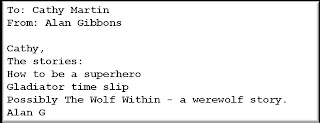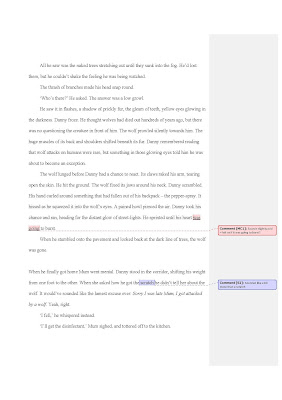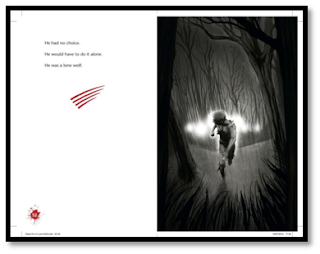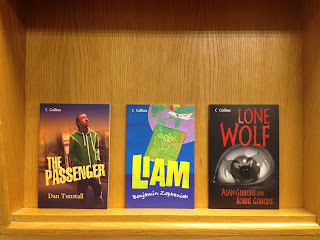Meet Cathy Martin, editor.

Cathy is the Commissioning Editor for all the ‘Read On’ books including, of course, Lone Wolf. This means she came up with ideas for the books and found authors and illustrators to make those ideas a reality!
Cathy is going to tell you about the many parts of the process for putting together Lone Wolf.
Cathy says …
My role as editor of ‘Read On’ involved coming up with and researching the idea of the whole series, and then working with a team of creative people to make it happen.
I first talked to teenagers in different schools about the kind of books they enjoyed reading. Of course, horror was a popular choice. One boy told me he would like to read a story where a bloody heart was ripped from someone’s body!
We were delighted that Alan Gibbons and his son Robbie Gibbons were able to write several stories for us. Here is the email Alan sent me with their first ideas:

The werewolf story sounded like it was just what we were looking for. Robbie wrote a short summary of the story and then the full manuscript of Lone Wolf arrived.
The editing process for Lone Wolf was very straightforward, as the first draft of the story was so strong. There were just a few corrections to make.

A sample page from the real manuscript
The biggest decision was what to show in the illustrations.
In horror stories, as in horror films, the most scary moments are not when you see something horrible but when it is heard or suggested.
For most of the book we decided to focus on Danny’s thoughts and feelings as a boy, and to let readers imagine the werewolf for themselves. However, Matt Timson, our amazing illustrator, didn’t agree! He thought readers would definitely want to see the transformation on the page.
So, thanks to him, we have this image of Danny turning into a wolf on page 42.
Our designer Nigel laid out the book, we did some final checks and edits to make sure the text was just right, Paul finalised the cover, and then the files were sent to the printer.
The cover

Final pages from the book
Ten weeks later, Lone Wolf was here!

As an editor, nothing beats the thrill of holding a finished book in your hands. It was great to see those blood splashes and claw marks in the design, and the wonderful artwork to draw readers into Robbie and Alan’s story. We may not have had a bloody heart but we certainly had an exciting and gruesome book ready to share.
– Cathy Martin
Read more articles on Lone Wolf:
How a Book is Made – The Illustrator
How a Book is Made – The Designer
How a Book is Made-The Cover
How a Book is Made_Lone Wolf


